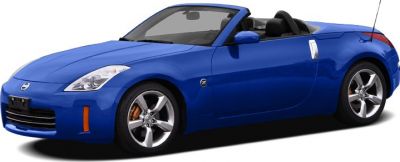 1996 Porsche 911 Targa (993) Dimensions, Size & Specs
1996 Porsche 911 Targa (993) Dimensions, Size & SpecsMeasurements of the 1996 Porsche 911 Targa, engineered for optimal performance and comfort
| Dimensions | |
|---|---|
| Length: | 4245 mm167.1 in13.9 ft |
| Width: | 1735 mm68.3 in5.7 ft |
| Height: | 1300 mm51.2 in4.3 ft |
| Trunk Capacity (Max): | 123 liter4.3 cu ft |
| Weight Specifications | |
| Curb Weight: | 1400-1425 kg3086-3142 lbs |
| Maximal permitted Weight: | 1740 kg3836 lbs |
| Tire Specifications | |
| Rims Sizes: | 16-inch rims:
|
| Tire Sizes: |
|
The Porsche 911 Targa (993) produced between 1996 and 1997 represents an iconic generation of the 911 series that blends classic styling with modern cabriolet engineering. This specific generation, part of the revered 993 series, is cherished for its air-cooled engine and unique Targa roof design, which offers a versatile open-air driving experience without compromising structural rigidity.
Measuring 4245 mm (167 inches) in length, 1735 mm (68.3 inches) in width, and standing 1300 mm (51.2 inches) tall, the 911 Targa 993 holds a compact yet sporty footprint ideal for both city and spirited driving. The vehicle's curb weight ranges between 1400 to 1425 kg (3086 to 3141 lbs), balancing lightweight agility with stability. Its maximum permissible weight reaches up to 1740 kg (3836 lbs), underscoring its robust build quality.
Storage practicality is modest but efficient in this model, featuring a luggage capacity of 123 liters (approximately 4.3 cubic feet) with rear seats folded down, suitable for short trips or weekend drives. The Porsche 911 Targa rides on 16-inch wheels, with rim sizes of 7J x 16 at the front and a wider 9J x 16 at the rear, fitted with tires sized 205/55 R16 on the front axle and 245/45 R16 on the rear, ensuring excellent grip and driving dynamics.
This generation of Porsche 911 Targa combines heritage aesthetics with performance-focused dimensions and engineering, making it a timeless collector’s sports car that offers versatility and a distinct driving pleasure characteristic of Porsche’s storied 911 lineage.
Discover the standout features that make the 1996 Porsche 911 Targa a leader in its class
Have a question? Please check our knowledgebase first.
The Porsche 911 Targa (993) from the 1996-1997 production years measures 4245 mm (167.1 inches) in length, 1735 mm (68.3 inches) in width, and 1300 mm (51.2 inches) in height. These dimensions contribute to its compact yet sporty profile, enabling it to maintain the classic 911 silhouette with the unique Targa roof design. The relatively low height adds to its aerodynamic performance, while the width provides stable handling characteristics expected of Porsche sports cars.
Yes, the Porsche 911 Targa (993) fits comfortably into a standard residential garage. Its length of 4245 mm (167.1 inches) and width of 1735 mm (68.3 inches) place it well within typical garage dimensions, which usually exceed 6 meters by 3 meters (approximately 236 by 118 inches). The relatively low height of 1300 mm (51.2 inches) ensures ample clearance in most garages. Overall, the compact size makes parking and storing the 993 Targa convenient without requiring special accommodations.
The curb weight of the Porsche 911 Targa (993) ranges between 1400 and 1425 kg (3086 to 3140 lbs), with a maximum weight of up to 1740 kg (3836 lbs). This relatively moderate weight for a sports car of its era enables a balanced combination of agility, acceleration, and handling prowess. The 993 generation was known for improved weight distribution and chassis dynamics compared to older models, partly due to advances in materials and engineering. The weight supports spirited driving without significant compromise on ride comfort or stability.
The Porsche 911 Targa (993) offers a rear luggage capacity of 123 liters (about 4.3 cubic feet) when the rear seats are folded down. Although sports cars like the 911 are not designed primarily for large cargo loads, this capacity allows for modest storage of luggage, groceries, or small sports equipment. It makes the Targa reasonably practical for short trips or weekend getaways, balancing the fun factor of a cabriolet with some elements of everyday usability.
The Porsche 911 Targa (993) is equipped with front rims sized 7J x 16 and rear rims sized 9J x 16. These are paired with front tires sized 205/55 R16 and rear tires sized 245/45 R16. This staggered setup enhances grip and handling balance, particularly given the rear-engine layout. The 16-inch rim diameter was typical for the era, combining style, performance, and ride quality.
Compared to the Porsche 911 Targa 964 generation (produced until 1994), the 993 Targa is slightly larger, reflecting evolutionary design changes aimed at improving aerodynamics and driver comfort. While the 964 Targa's length was approximately 4250 mm, very close to the 993's 4245 mm, the 993 featured wider tracks and a more aerodynamic body shape. In width, the 993 is roughly 1735 mm versus the 964's slightly narrower stance. These dimension tweaks, combined with chassis advancements, offered better road grip, handling precision, and a refined driving experience without a significant increase in overall size.
The Porsche 911 Targa (993) holds its own dimensionally against comparable sports convertibles from the mid-1990s, such as the Ferrari F355 Spider or the Jaguar XJ-S Convertible. With a length of 4245 mm (167.1 inches), it is slightly more compact or comparable to these rivals, which typically ranged from 4.2 to 4.5 meters in length. Its width of 1735 mm (68.3 inches) is moderate, offering excellent maneuverability in urban and spirited driving scenarios. The 993's relatively low height of 1300 mm also contributes to its classic sports car aesthetics and aerodynamic advantage, a feature shared with its peers, which typically favor a low center of gravity.
The Targa roof on the 993 generation adds a unique blend of open-air driving while preserving structural rigidity compared to full convertibles. It features a removable roof panel and a fixed rear window, offering the driver an open-top experience with increased safety and reduced wind noise. This design combines the best aspects of a coupe and a cabriolet, making it highly desirable for enthusiasts who appreciate both style and driving dynamics. The 993 Targa is especially admired for its smooth roof mechanism and classic aesthetic that pays homage to earlier Targa models.
The Porsche 911 Targa (993) has a height of 1300 mm (51.2 inches), which is relatively low compared to many other vehicles. This low profile improves aerodynamic efficiency, contributing to higher speed stability and better fuel efficiency. Additionally, the low height lowers the center of gravity, enhancing cornering stability and overall handling performance. Drivers benefit from sporty, agile driving dynamics typical of the 911, with the Targa design adding the versatility of open-air motoring without drastically increasing vehicle height.
The Porsche 911 Targa (993) weighs between 1400 and 1425 kg (3086 to 3140 lbs), which is relatively light for a car offering a combination of performance and luxury. This moderate curb weight helps the vehicle achieve a balance between responsive acceleration and reasonable fuel efficiency for its class. While not as economical as compact cars, the 993’s weight contributes to efficient power delivery from its engine and manageable handling characteristics for daily driving. Its balance of weight and power makes it practical for enthusiasts looking for spirited drives without excessive fuel consumption.
Discover similar sized cars.

| Production: | 2003-2007 |
|---|---|
| Model Year: | 2003 |
| Length: | 4310 mm169.7 in |
| Width: | 1815 mm71.5 in |
| Height: | 1328 mm52.3 in |

| Production: | 1989-1999 |
|---|---|
| Model Year: | 1989 |
| Length: | 4140-4180 mm163.0-164.6 in |
| Width: | 1700 mm66.9 in |
| Height: | 1234-1240 mm48.6-48.8 in |

| Production: | 1994-1997 |
|---|---|
| Model Year: | 1995 |
| Length: | 4245 mm167.1 in |
| Width: | 1735 mm68.3 in |
| Height: | 1300 mm51.2 in |

| Production: | 1989-1991 |
|---|---|
| Model Year: | 1991 |
| Length: | 4230 mm166.5 in |
| Width: | 1735 mm68.3 in |
| Height: | 1275 mm50.2 in |
